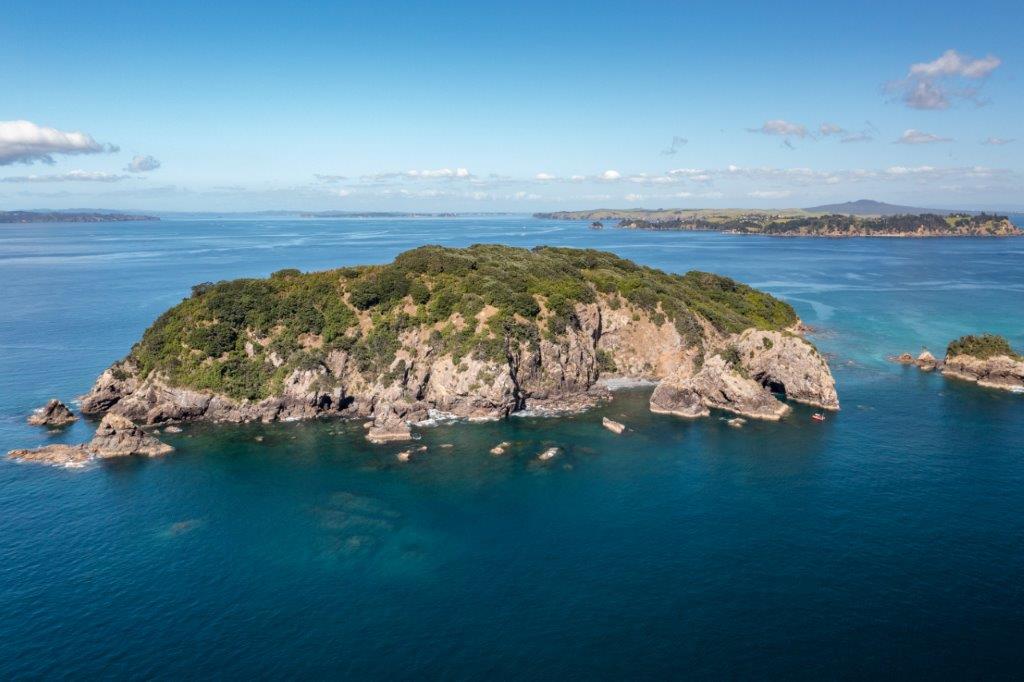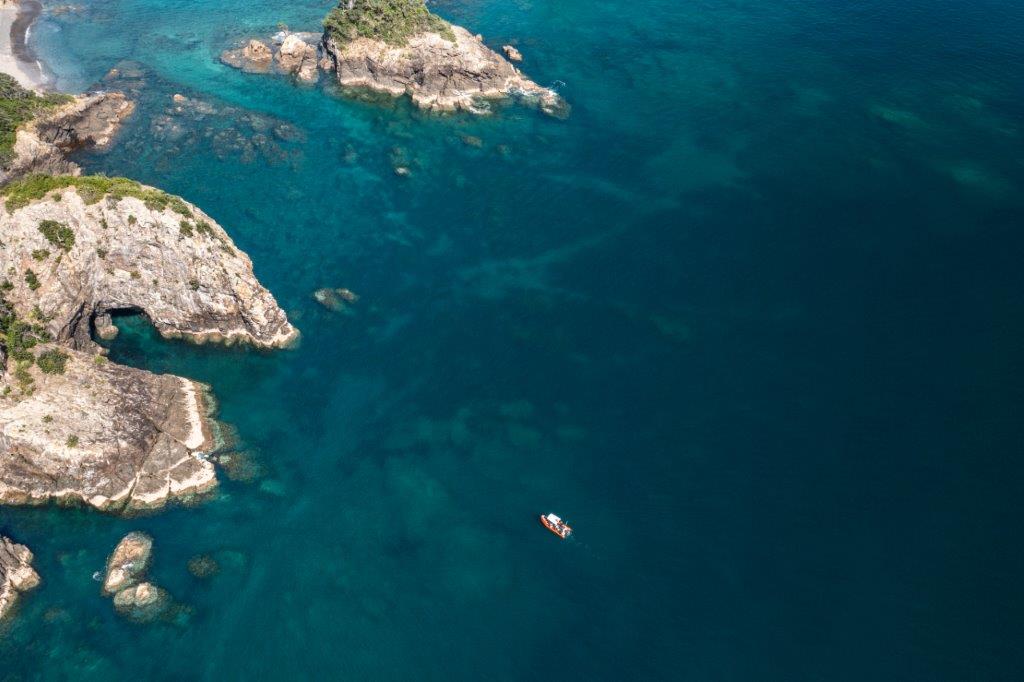The Noises hold a very special interest for seabird lovers. Being home to at least…
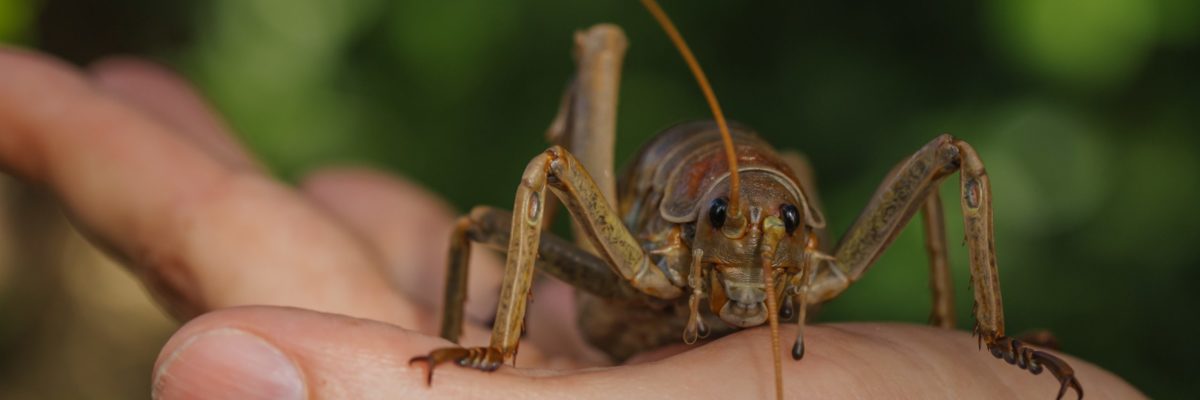
In Praise of Six Legs – The Mighty Wētāpunga
It’s International Insect Week from June 21-27, a biannual initiative run by the Royal Entomological Society in the UK that acknowledges all the vital work insects do – from breaking down waste matter, providing food for other creatures and adding to the richness of the soil with their poo.
To celebrate this auspicious event, we’re taking a closer look at the mighty wētāpunga (giant wētā), and one of the most passionate wētāpunga champions we know is Ben Goodwin, an ectotherm keeper at Auckland Zoo – and Ben loves sharing his enthusiasm for these charismatic creatures. Since 2012, with the support and blessing of the guardians of Te Hauturu o Toi (Little Barrier), Ngāti Manuhiri, and the Department of Conservation to collect founder wētāpunga, Ben and his Zoo colleagues have been breeding and releasing wētāpunga onto predator-free islands in the Hauraki Gulf.
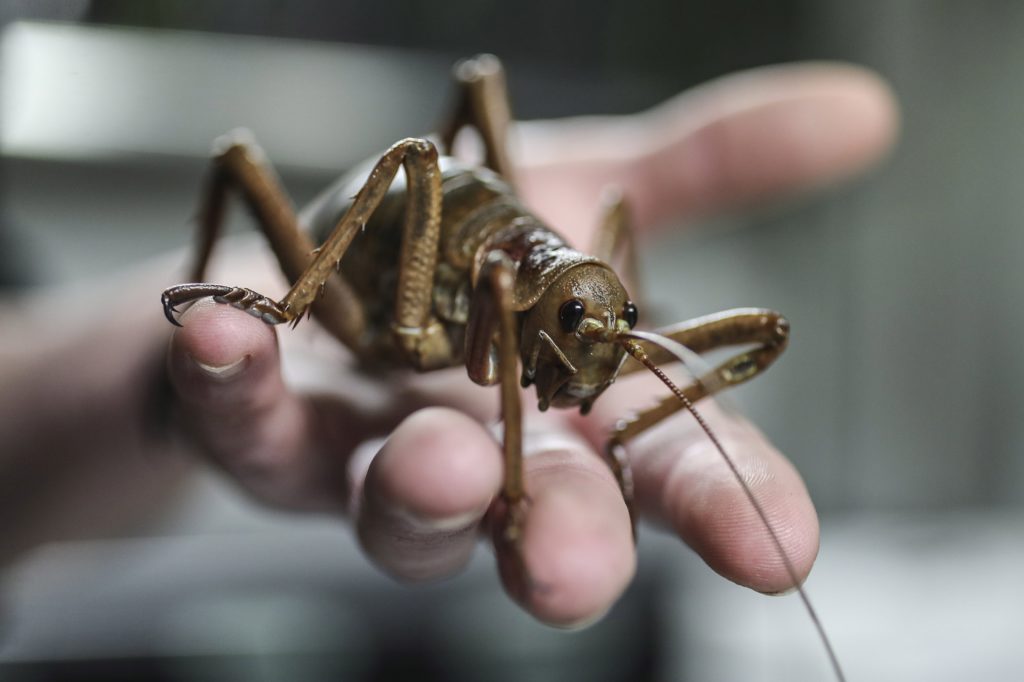
“The wētāpunga (Deiancrida heteracantha) is New Zealand’s largest insect and it was once found right across northern New Zealand, from the Hauraki Gulf up to Paihia in Northland,” Ben tells us. “But the latter half of the nineteenth century saw it suffer a catastrophic decline – almost certainly because of rodent predation – and the species became restricted to just one island Te Hauturu o Toi (Little Barrier).”
Te Hauturu o Toi is a protected nature reserve with superb habitat, but it is never ideal for an entire species to be restricted to one place. As Ben says, “the more populations, the more secure the species. And until relatively recently, Te Hauturu o Toi was also home to kiore (Pacific rats/Rattus exulans), which were significant predators of wētāpunga and, by the early 2000s, the rats had savagely reduced the insect population on Te Hauturu o Toi as well.”
Thanks to a rigorous campaign, kiore were finally eradicated there in 2004. “Wētāpunga numbers have been on the rise ever since,” Ben explains, “but not enough to support the removal of the large numbers we require for direct wild-to-wild translocation, so our only realistic solution was captive breeding.”
The good news is, insects are well suited to captive breeding projects, partly because each animal can produce large numbers of offspring so you don’t need a lot of founding animals to achieve high numbers of progeny. And large numbers are required for insect translocations because an unknown quantity will be predated by other animals before they get a chance to reproduce. “Such is the life of an insect,” Ben notes, philosophically.
The wētāpunga breeding-for-release programme was started in 2008 and Auckland Zoo joined in 2012. “Initially, we bred animals for Tiritiri Matangi and Motuora, but because we had developed a really good system for mass-rearing we soon realised we needed more release sites to keep up with the large volumes we were producing.”
In 2015 Ben and a colleague visited The Noises and, with the help of capable Rod Neureuter, the trio assessed potential habitats. Were there enough food plants and day-time refuge areas? They were delighted to find Ōtata and Motuhoropapa were both ideal for the giant insects and, after completing the necessary DOC and iwi permissions, they began working towards translocating.
“We wanted to try a different release strategy on The Noises. On Tiritiri Matangi and Motuora we were releasing large, up to adult, wētāpunga by day, each with its own bamboo protective refuge, partly due to the high densities of predatory birds, especially tīeke (saddlebacks) on those islands. We were comfortable that on The Noises, with less land birds, we would be safe to translocate smaller wētāpunga, provided we released them at night when most birds are asleep and the nocturnal wētāpunga were awake.”
Motuhoropapa was the first to get the green light, with 1640 wētāpunga moved there between 2015 and 2017, after which 1678 animals were introduced to Ōtata between 2016 and 2018.
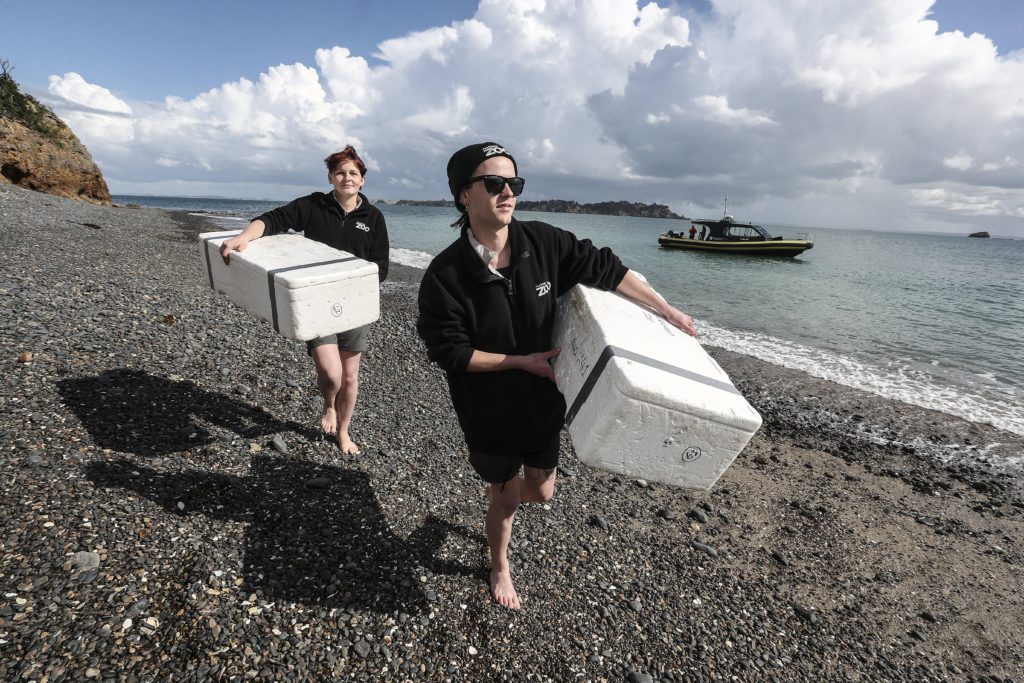
How successful have these efforts been you wonder? Well, the first step to assessing success is to confirm that the species is breeding on the island, which involves waiting beyond the life-cycle of the last translocated animals. Eggs take approximately 12 months to incubate, then the insects take a further 12 months to reach maturity. When mature insects enjoy a mere twelve months of adulthood – making for a three-year life cycle.
“We did our first survey in October 2020,” Ben tells us. “So we can be sure any wētāpunga present on the islands must have been born there.”
The first formal survey used the ‘spotlighting’ method, which simply involves looking for wētāpunga at night with a torch. Then the total number was tallied up, including noting the number of animals seen versus the time spent searching for them which provides an ‘encounter rate’.
“In 2020, our encounter rates on Ōtata were similar to those on Te Hauturu o Toi in 2007. But on Motuhoropapa, the encounter rate was a remarkable 30 times higher. It’s hard to say why – perhaps it is related to differences in habitat – and longer term monitoring will give us a better picture of those population dynamics. There will be fluctuations, of course, but at this stage, things are looking great.”
Kia ora koutou – both to the breed for release team and to all our hard-working insects!
NB: The first time the writer of this story saw wētāpunga poo, she thought a rat family with impressively regular and sizeable bowel habits had invaded Motuhoropapa, but thankfully no, it was just the large pellets of wētāpunga waste – one of the largest of any insect on earth, and its nutrient-rich nature plays a vital role in the forest ecosystem.


